Sureungwon Garden (수릉원)
18.3Km 2024-01-23
35 Bunseong-ro 261beon-gil, Gimhae-si, Gyeongsangnam-do
Sureungwon Garden is a place themed around the meeting between King Suro, the founder of Gaya, and Queen Heo, who was the princess of Ayuta Kingdom, known as India. The name Sureungwon Garden also contains the meaning of an elegant forest where King Suro and Queen Heo walked together. An ecological park measuring 39,600 m2 has been created along a low ridge that connects the Tomb of King Suro, an important cultural heritage of the Gaya period; the Ancient Tombs in Daeseong-dong, the tombs of the Gaya kings; and the Bonghwang-dong Historic Site. It was created by representing the maritime kingdom of Gaya, imagining a pond of the garden where King Suro and Queen Heo used to walk, and planting prickly waterlilies and yellow floating hearts that are believed to have inhabited wetlands in the Gaya period. Trails along the cozy forest and pond make it easy to look around comfortably.
Gadeokdo Lighthouse (가덕도 등대)
18.3Km 2020-06-01
1237, Gadeokhaean-ro, Gangseo-gu, Busan
+82-51-971-9710
Gadeokdo Lighthouse is a manned lighthouse patterned after the gothic style of lighthouses in France. Built in December, 1909 at the end of the Daehan Empire (1897-1910), it is an intricate building that houses a light tower (9.2 meters high), an office, and a lighthouse keeper’s room. Plum blossoms, the symbol of the imperial family of Joseon, are delicately carved along this European-style building. It is considered a remarkable cultural property not only because of its architectural design, unique shape or historic value, but also because it has been surprisingly well-maintained, especially in comparison to other lighthouses built during the same period. In recognition of its unmatched style and preservation, the old Gadeokdo lighthouse was designated Tangible Cultural Property No. 50 of Busan in Sep. 2003. It is owned and managed by the Ministry of Maritime Affairs and Fisheries. A new lighthouse was built next to the original one in 2002. The new lighthouse structure is octagonal in shape and 40.5 meters high, the second highest lighthouse in Korea.
Gadeokdo Island, the location of Gadeokdo lighthouse, is often referred to as the ‘Island of History,’ and is the largest island in Busan. Gadeokdo, a strategically important base for military operations and seaborne trade, was the stage for a number of gruesome battles during the Imjin War (1592-1598). Today, it is a critical entry point to the Jinhae Bay.
Gadeokdo Lighthouse is located within a national naval base. Therefore, visitors must contact and register with the Busan Regional Maritime Affairs and Port Office prior to visiting the lighthouse. Those who participate in the Lighthouse Experience Program (parties of 6 or less) can spend the night in the innkeeper’s room free of charge. In order to use these accommodations, visitors must apply online at the Busan Regional Maritime Affairs and Port’s homepage between the 1st and the 8th of the month, one month prior to the desired date of visit.
Gaya Culture Festival (가야문화축제)
18.3Km 2024-10-08
35 Bunseong-ro 261beon-gil, Gimhae-si, Gyeongsangnam-do
+82-55-330-6840
The Gaya Culture Festival celebrates the Gaya Kingdom, founded by King Kim Suro in AD 42, and its 500-year history. Gaya was quite advanced in the production of earthenware and iron implements, evidenced by the many artifacts found from that time. Through the Gaya Culture Festival, the region is continuing to preserve, build on, and develop the Gaya culture and heritage. The Gaya Culture Festival asserts Gaya’s rightful place alongside the Goguryeo, Baekje, and Silla kingdoms.
Olive Young - Busan Guseo Station Branch [Tax Refund Shop] (올리브영 부산구서역)
18.4Km 2024-04-16
3, Guseo-ro, Geumjeong-gu, Busan
-
Guseo Osige Market (구서 오시게시장)
18.5Km 2024-02-26
12 Guseo-ro, Geumjeong-gu, Busan
051-581-4830
Guseo Osige Market, a traditional marketplace, is situated near Exit 1 of Guseo Station on Busan Subway Line 1. The market building allocates its first and second floors for commercial activities, while the third and higher floors are designated for residential use. It boasts a diverse array of shops, including rice cake shops, porridge shops, restaurants, places specializing in sliced raw fish, butcher shops, dried seafood shops, fruit vendors, and hanbok stores. Additionally, the market features stalls where local grannies sell their home-grown vegetables and herbs, alongside handmade offerings like bean curd and acorn jelly.
Geumjeongsanseong Fortress (금정산성)
18.5Km 2024-03-05
78-5 Bungmun-ro, Geumjeong-gu, Busan
+82-51-519-4092
Geumjeongsanseong Fortress, with a circumference of 18,845 meters along the ridges and valleys of Geumjeongsan Mountain, is a large-scale fortress built during the Joseon dynasty between 1701 and 1703. The fortress is accompanied by Geumjeongsanseong Village and is known for producing Sanseong makgeolli (unrefined rice wine), a traditional Korean alcoholic beverage. Additionally, there are numerous restaurants, cafés, and attractions, making it a place where nature, history, cuisine, and sightseeing coexist.
Museum of the ancient tombs in Daseong-dong (대성동고분박물관)
18.6Km 2023-01-02
126, Gayaui-gil, Gimhae-si, Gyeongsangnam-do
+82-55-350-0401
The Museum of the ancient tombs in Daseong-dong displays artifacts unearthed from the four excavations of the Daeseongdong Tumuli. Highlighting often overlooked relics of the Geumgwan Gaya, the museum has three ground-floor exhibit halls and several underground auxiliary facilities. The main exhibits include a life-sized statue of a mounted soldier and a warrior statue, both recreated based on bones excavated from the tumuli of Yean-ri. The museum relies heavily on videos and dioramas to help visitors explore all the museum has to offer.
Bunsanseong Fortress (김해 분산성)
18.6Km 2023-01-18
210-162, Gaya-ro 405beon-gil, Gimhae-si, Gyeongsangnam-do
+82-55-330-3925
Bunsanseong Fortress was constructed in the 3rd year of the reign of Goryeo's King U (1377) by Magistrate Park Wi to defend against foreign enemies, but it was destroyed during the Japanese invasion of 1592. The fortress we see today was reconstructed by Magistrate Jeong Hyeon-seok in the 8th year of the reign of Joseon's King Gojong (1871). However, it is estimated that it was first built during the days of Gaya. It is a temoe-style fortress with rocks piled up like a long band at the peak of Bunsan from which downtown Gimhae, Gimhae Plains, the Nakdonggang River and the South Sea are all in a single, panoramic view. Today, fortress walls remain stretching for some 900 meters on the slope towards the city and, inside the fortress, there are two gate sites in the south and north, an auxiliary gate on the west, a well site and several other building sites. The exact length of the remaining fortress walls is 929 meters and the average x_width is about 8 meters.
Inside the fortress lies Haeeunsa Temple, which was built to pay respects to Queen Heo of Garak who had come from the sea, according to stories. The temple also enshrines portraits of King Suro and Queen Heo that were painted during the Joseon dynasty. During the Japanese invasion of 1592, monk soldiers were stationed at this temple.
The fortress is more popularly called "Manjangdae" by Gimhae locals, and this name originated from the description, "A tall tower 10,000 (man) gil in x_height," granted by Daewongun in the Joseon dynasty for this advanced base that defeats Japanese invaders. A writing of "Manjangdae" written by Daewongun himself as well as his stamp are engraved on a rock behind a beacon that was restored in 1999.
Ancient Tombs in Daeseong-dong, Gimhae (김해 대성동 고분군)
18.6Km 2020-04-02
126, Gayaui-gil, Gimhae-si, Gyeongsangnam-do
+82-55-330-3934
The tumuli in Daeseong-dong, located to the east of the Royal Tomb of Kim Suro, reflect the formation and development of the Gaya Era. The Daeseong-dong Tumuli are located in the center of the shell mounds of Hoehyeon-ri, the location of the founding of the Gaya Kingdom according to local legend.
The tumuli relics were excavated by researchers from the Kyungsung University Museum from 1990 to 1992 and were found to be the common burial ground of the dominant class of the Gaya Kingdom. On the hilltops, which were viewed as prime burial places, are the tombs of kings and rulers; on the slopes are the tombs of the lower classes.
A total of 136 tumuli were found in the Daesong-dong area. Further investigation of the tumuli revealed several important and interesting facts. First, from the end of the third century, men and horses were buried alive along with the dead. Also, weapons were bent and buried as well, with many of these artifacts being unearthed among the tumuli. Other materials found in the tumuli such as cylindrical bronze items, pinwheel-shaped bronze items, and jasper items showed that Gaya was involved in trade with Japan. The Daeseong-dong Tumuli is significant in that it gives a glimpse into the political and social structure of the Gaya Kingdom, and the cultural exchange between Korea, China, and Japan.
E-Mart - Geumjeong Branch [Tax Refund Shop] (이마트 금정)
18.8Km 2024-04-22
24, Jungang-daero 1841beon-gil, Geumjeong-gu, Busan
-

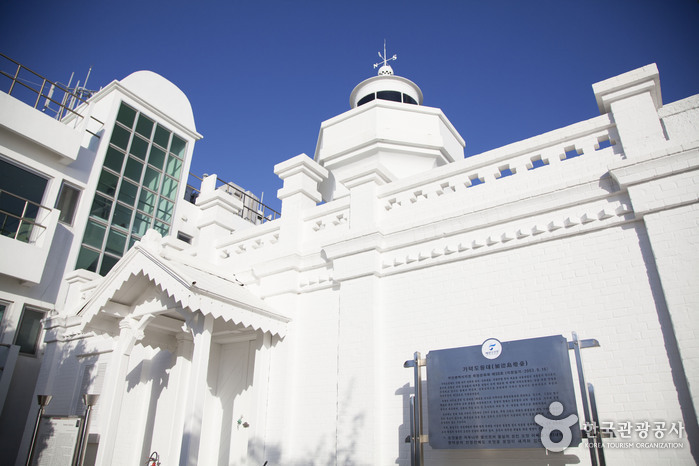
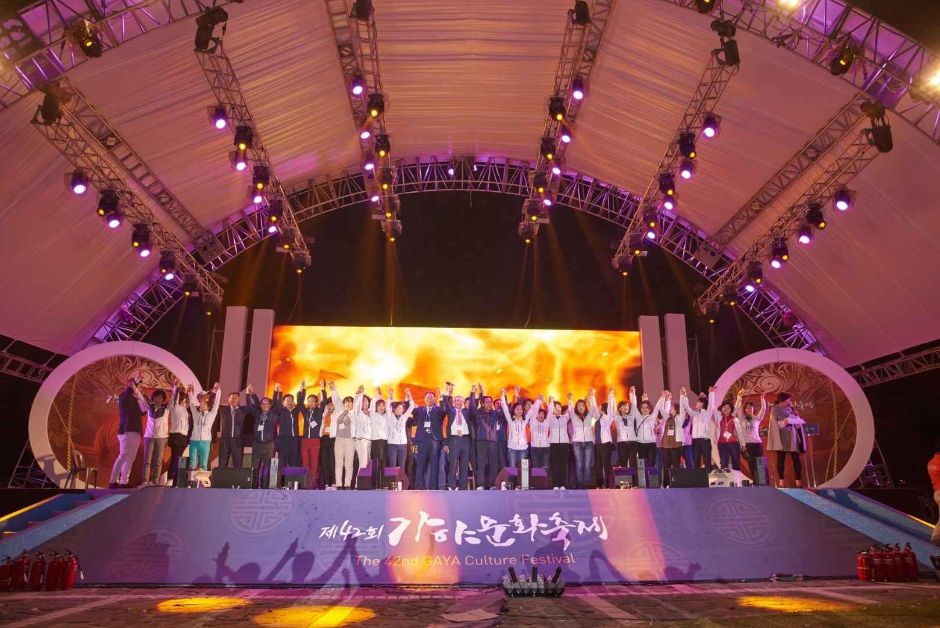
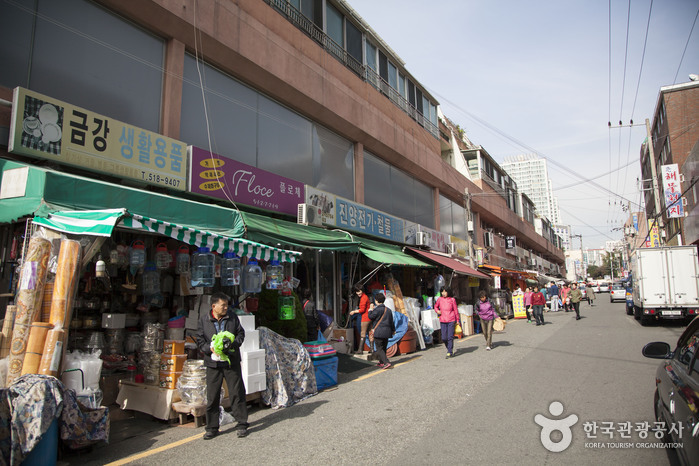
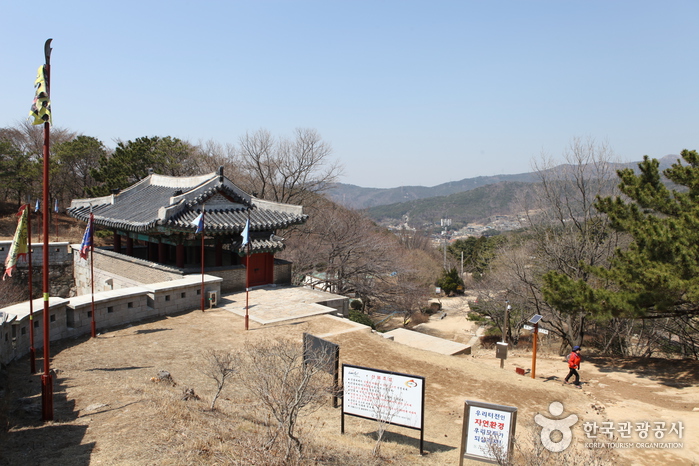
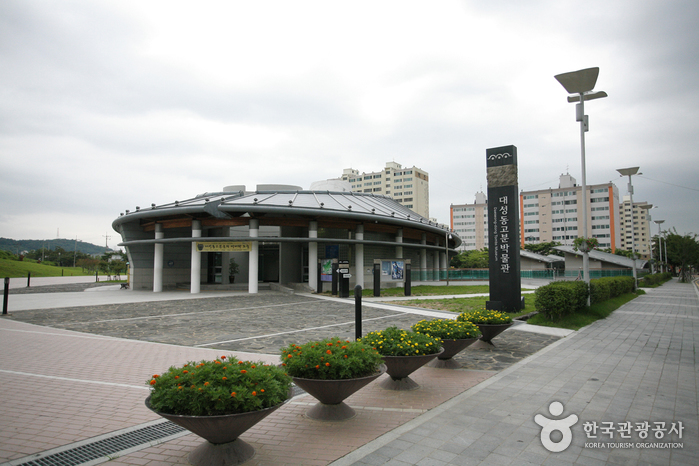
![E-Mart - Geumjeong Branch [Tax Refund Shop] (이마트 금정)](http://tong.visitkorea.or.kr/cms/resource/70/2889470_image2_1.jpg)
 English
English
 한국어
한국어 日本語
日本語 中文(简体)
中文(简体) Deutsch
Deutsch Français
Français Español
Español Русский
Русский